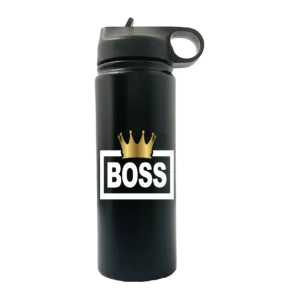Net 30 is a common term you might have stumbled upon in invoices or during negotiations with vendors, but what does it really mean? This term is crucial in understanding business transactions, particularly in managing funds and maintaining healthy relationships with vendors and suppliers.
Essentially, ‘Net 30’ is a credit term used in accounting that dictates the payment for goods or services should be completed within 30 days from the invoice date.
In this guide, we’ll explore how Net 30 impacts both the buyer’s and seller’s cash flow and overall business operations. Stick around to understand the ins and outs of this popular payment term, which, when managed correctly, can benefit both parties in the long run.
What Does Net 30 Mean in Accounting?

Definition of Net 30
Net 30 is a type of trade credit offered by sellers to their buyers, allowing them to pay for goods or services received within 30 days after the invoice date. The Net 30 term is crucial for both accounting and finance as it sets the payment expectations between businesses.
The “Net” in Net 30 simply refers to the total amount due, with no discounts for early payment. This standard practice helps businesses manage their cash flow more efficiently while providing a specific timeframe for payment, making it easier for companies to plan and allocate their financial resources.
Importance of Net 30 in Accounting
In the realm of accounting, Net 30 is vital for several reasons. First, it standardizes the payment expectations between vendors and buyers, which decreases confusion and enhances financial forecasting. For small businesses, offering credit terms like Net 30 can be an effective strategy to attract and retain customers who might require little extra time to make payments without causing financial strain on the supplier.
Moreover, Net 30 enables businesses to manage their receivables more efficiently. Companies can use these terms as part of their strategic financial planning to predict when their income will be received and plan their expenditures accordingly. Furthermore, by offering Net 30, businesses can also potentially boost sales by making purchases more attractive or feasible for customers who prefer depth to upfront expenditures.
Impact of Net 30 on Cash Flow
Cash Flow Management
Understanding and managing the cash flow impacted by Net 30 terms is critical for maintaining a healthy business operation. When a company extends credit to its customers under Net 30 terms, it effectively delays receiving payment for its goods or services. This delay can be both beneficial and detrimental.
On the positive side, offering Net 30 can lead to increased sales as customers appreciate the flexibility in managing their finances. However, if not properly managed, it can lead to cash flow shortages since the business must wait for a period before the cash is actually received.
This is where effective cash flow management comes into play. Businesses need to balance between extending credit to foster customer relationships and ensuring that their cash flow remains stable to meet day-to-day operations and obligations. Companies often need to monitor their accounts receivable closely, ensuring that payments are collected on time and credit terms are enforced.
Effects on Financial Statements
Net 30 payment terms directly impact a company’s financial statements, particularly the balance sheet and the income statement. On the balance sheet, accounts receivable will increase as sales are recognized but cash received is deferred. This asset expansion needs to be carefully measured against liquidity needs to ensure that the business does not run into short-term cash shortages.
The income statement is affected as the company recognizes revenue from sales made on credit but might not receive the cash until the future period. It is important for businesses to understand that while profit might be recorded, the actual cash flow might not correspond, potentially leading to discrepancies between the company’s profitability and its cash holdings.
Strategies for Optimizing Cash Flow with Net 30
To optimize cash flow while offering Net 30 payment terms, businesses can employ several strategies:
– Encouraging early payments: While Net 30 terms give customers a full month to pay, businesses can offer small discounts for earlier payments to accelerate cash inflows.
– Implementing credit checks: Before extending credit, a business should conduct credit checks to assess the customer’s ability to pay on time. This reduces the risk of delayed payments or defaults.
– Regular follow-ups: Businesses should actively manage their accounts receivable by sending timely and polite reminders for payments and regularly following up with late payers.
– Utilizing electronic payments: Encouraging customers to use electronic payments can expedite the receipt of funds. Systems like electronic funds transfer (EFT) or online payment portals help in receiving payments more swiftly than traditional methods like checks.
– Adjusting inventory management: Align inventory levels closely with cash flow needs to avoid overstocking, which ties up cash unnecessarily and impacts cash flow negatively.
By effectively applying these strategies, businesses can ensure that extending Net 30 payment terms does not adversely affect their financial health but rather supports their growth and operational efficiencies. Balancing customer relationships with robust financial controls is key to leveraging Net 30 effectively in any business context.
Vendor Relationships and Net 30
Navigating vendor relationships effectively can significantly impact your business operations and financial health. Incorporating Net 30 payment terms into these relationships can be a strategic decision fostering mutual trust and reliability. Understanding and implementing these terms properly not only ensures a steady supply chain but also aids in maintaining good rapport with your vendors.
Building Strong Vendor Relationships
Strong vendor relationships are crucial for a thriving supply chain. Adopting Net 30 payment terms can play an integral role in building these relationships.
By agreeing to pay invoices within 30 days, companies show financial stability and respect for their vendors’ cash flow needs. This goodwill helps in fostering trust and loyalty, leading to potential benefits such as priority service, better prices, or more favorable terms in the future.
Additionally, vendors are more likely to go the extra mile during crucial times if they have a positive payment history with a company.
Negotiating Net 30 Terms with Vendors
Negotiating Net 30 terms with vendors involves clear communication and mutual understanding of the benefits for both parties. Start by assessing the vendor’s policies and their openness to extended payment terms.
It’s vital to put forward the reasons why extending payment terms can be beneficial, such as the possibility of larger or more frequent orders. Maintaining transparency about your business’s financial health and future prospects can also aid in these negotiations. Always ensure that agreements are documented and legally binding to avoid any future discrepancies.
The Benefits of Net 30 Office Supplies with The CEO Creative
The CEO Creative, a prominent provider of office supplies, offers Net 30 payment terms that significantly aid in managing business operations smoothly and efficiently. This section explores how working with this vendor under these payment conditions can be beneficial.
Introduction to The CEO Creative as a Net 30 vendor
The CEO Creative is an innovative office supplies company that stands out for its flexible payment options, including Net 30 terms. This allows businesses to manage their finances better by providing a grace period to settle invoices, which can be particularly advantageous for managing cash flow. Especially for startups and growing companies, these terms can be a lifeline, enabling them to maintain operations even when immediate funds are tight.
Customized office supplies
One of the unique aspects of The CEO Creative is their offer of customized office supplies. This service allows businesses to order products tailored to their specific needs and branding requirements. Whether it’s customized stationery, company-branded office décor, or ergonomic furniture designed to match company colors, The CEO Creative can accommodate. This customization not only enhances the professional look of an office but also boosts employee morale and brand identity.
Benefits of using The CEO Creative
Working with The CEO Creative offers multiple benefits:
– Improved Cash Flow: The Net 30 terms provided by The CEO Creative assist businesses in better cash flow management. Companies can allocate funds more effectively throughout the month without compromising on their office supply needs.
– Customization and Branding: The ability to customize products helps in creating a cohesive brand image, which is invaluable for business identity and corporate culture.
– Quality Products and Reliable Service: The CEO Creative is known for high-quality products and reliable delivery, ensuring that businesses have consistent access to the supplies they need without delay.
– Support for Small Businesses: Small businesses, in particular, benefit from Net 30 terms, as it gives them room to breathe financially during the early stages of their development.
How to get started with The CEO Creative
Getting started with The CEO Creative is a straightforward process:
1. Contact: Reach out through their website or customer service to express interest in their products and Net 30 terms.
2. Account Setup: You’ll need to set up an account, which involves providing basic business information and possibly undergoing a credit check.
3. Order Customization: Discuss your specific needs for customized supplies and finalize the details.
4. Order and Delivery: Place your order and enjoy timely delivery with the convenience of paying later.
Managing office supply needs effectively while maintaining a healthy cash flow and building strong vendor relationships is crucial for any business. By utilizing Net 30 payment terms, especially through a vendor like The CEO Creative, businesses can enjoy numerous benefits. Whether it’s the financial flexibility, the customized products, or the reliable service, these factors play a significant role in supporting the operations and growth of companies across various industries.
Best Practices for Managing Net 30 Payments
Managing Net 30 payment terms effectively is crucial for maintaining healthy cash flows and building strong vendor relationships. Here’s how you can set up an efficient system, track and monitor invoices, and handle late payments pragmatically.
Setting Up an Efficient Payments System
Establishing an efficient payments system begins with clear communication of your Net 30 terms right from the start. Ensure these terms are included in contracts, invoices, and even on your website if applicable.
Utilizing digital invoicing systems can also streamline processes and reduce errors. These systems often come with features such as automated reminders, digital receipt acknowledgments, and easy-to-use dashboards that aid in managing cash flows.
Additionally, consider offering multiple payment methods; flexibility can lead to faster payments as vendors choose the method that’s most convenient for them. Here’s a quick checklist to help you set up:
– Clearly state payment terms on all financial documents.
– Use a reliable, automated invoicing system.
– Provide multiple payment options to cater to different preferences.
This proactive approach not only minimizes misunderstandings but can also encourage timely payments, ensuring your business maintains a steady operational rhythm.
Tracking and Monitoring Net 30 Invoices
Effective tracking and monitoring of Net 30 invoices are essential to avoid cash flow disruptions. Implement an invoice tracking system that flags each invoice with its due date and sends out alerts as the payment date approaches. This can be facilitated by most modern accounting software which offers the feature to tag and track invoices, giving you a clear snapshot of payments due, received, or overdue at any time. Regular reviews of these invoices allow for early detection of potential delays, giving you ample time to react. Other effective strategies include:
– Setting up weekly or bi-weekly reviews of accounts receivable.
– Using dashboard analytics to visualize cash flow and payment statuses.
– Regularly updating your records to reflect received payments promptly.
With these systems, your business can anticipate and manage cash flow needs more precisely, avoiding the snowball effect of accumulated late payments.
Addressing Late Payments and Delinquencies
Despite best efforts, late payments are sometimes unavoidable. Handling these efficiently requires a structured approach that begins with courtesy but can escalate if needed. Initially, sending a polite reminder shortly before the payment is due, and a few days after can often jog the recipient into action without straining business relations. If the payment remains outstanding, a more direct approach may be required:
– Formal demand letters that reinforce the terms of payment agreed upon.
– Telephone follow-ups to discuss the delay directly.
– Considering charging late fees as per the agreed terms, if applicable.
If delinquencies persist, explore options like payment plans for those who are genuinely unable to pay by the due date. This helps maintain relationships and often guarantees eventual payment. Lastly, for chronic late payers, reassess whether continuing business relations aligns with your financial strategies. Keeping a professional tone throughout all communications preserves relationships and upholds your business’s reputation.
By applying these best practices, businesses can significantly enhance their ability to manage their accounts receivable more effectively, ensuring healthier vendor relationships and more stable cash flow. Manage your Net 30 terms wisely, and they will serve your business well.
Conclusion
Understanding the Net 30 payment term is essential in the world of business, particularly in managing finances and maintaining good relationships with vendors. By offering or negotiating Net 30 terms, businesses can optimize their cash flow while also providing reasonable time for payment to partners and suppliers.
Whether you’re an established entity or a budding entrepreneur, keeping these insights in mind when designing the payment terms of your invoices can significantly affect your financial stability and operational efficiency. Remember, effectively managing payment terms is key to financial health and long-term success.





